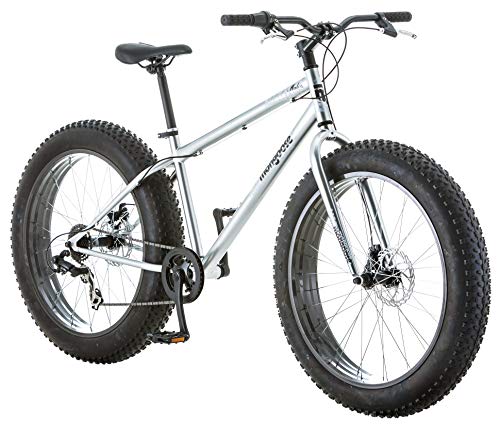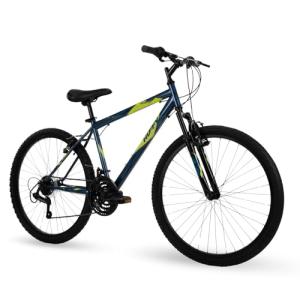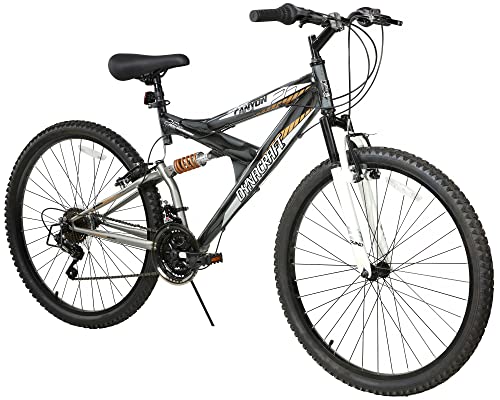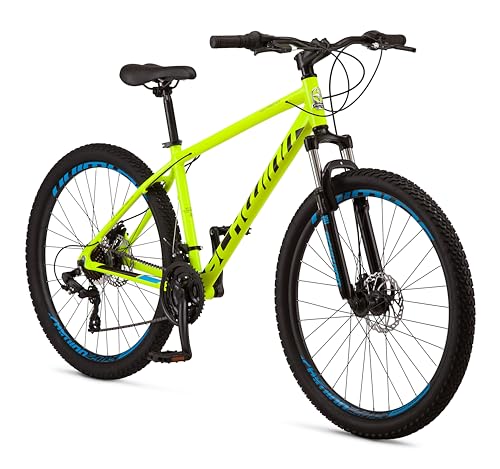Explore Your Riding Terrain Preferences
Are you considering getting into cycling, but unsure which type of bike suits your needs best? Understanding your preferred riding terrain is crucial for making the right choice. Whether you're drawn to smooth pavement, rugged trails, or a mix of both, there's a bike perfectly suited for your adventures.
Consider Road Cycling
Road cycling offers a smooth and fast-paced experience, perfect for those who enjoy covering long distances on well-paved surfaces. Road bikes are characterized by their lightweight frames, narrow tires, and drop handlebars, allowing for efficient riding positions and high speeds. If you're drawn to the thrill of speed and the camaraderie of group rides, road cycling might be your ideal choice.
Check Out Mountain Biking
For those who crave adventure and excitement, mountain biking provides an adrenaline-fueled experience through rugged terrain. Mountain bikes are built to withstand the challenges of off-road riding, with features like suspension systems, wider tires, and durable frames. Whether you're navigating rocky trails, flying down descents, or conquering technical climbs, mountain biking offers a thrilling escape into nature.
Explore Hybrid Bikes
If you find yourself torn between the speed of road cycling and the versatility of mountain biking, hybrid bikes offer the perfect compromise. Designed for a mix of on-road and off-road riding, hybrid bikes feature a blend of road and mountain bike components. With wider tires for stability and comfort, upright riding positions for visibility, and versatile gearing systems, hybrid bikes excel in tackling a variety of terrains. Whether you're commuting to work, running errands around town, or exploring gravel paths, hybrid bikes offer a versatile and practical solution.
Assess Your Terrain Needs for Each
Before making a decision, take some time to assess the type of terrain you'll be riding most frequently. Consider the surfaces available in your area, whether it's smooth roads, rugged trails, or a mix of both. Think about your riding goals and preferences—are you looking to ride for fitness, commute to work, or embark on epic off-road adventures? By understanding your terrain needs for each type of cycling, you'll be better equipped to choose the perfect bike for your riding style and preferences.
Road Bike Breakdown: Your Ultimate Guide
When it comes to road cycling, every component of your bike contributes to your performance and riding experience. Whether you're a seasoned racer or a recreational rider, understanding the nuances of road bikes can help you make an informed decision when choosing your next ride.
Frame Materials and Design
The foundation of any road bike is its frame, which can be constructed from a variety of materials, each offering unique characteristics. Aluminum frames are lightweight and affordable, making them ideal for entry-level riders or those on a budget. Carbon fiber frames, on the other hand, offer unparalleled stiffness and vibration dampening, resulting in a smoother and more comfortable ride. Titanium frames strike a balance between durability and weight savings, making them popular among discerning cyclists.
In addition to material choice, frame design plays a crucial role in the performance of a road bike. Aero frames feature streamlined shapes and tube profiles, reducing drag and improving efficiency at higher speeds. Endurance frames prioritize comfort with relaxed geometry and vibration-absorbing features, making them suitable for long-distance rides or rough roads. Racing frames prioritize stiffness and responsiveness, optimizing power transfer for maximum speed and efficiency.
Components and Gear Ratios
The components on a road bike, including the drivetrain, brakes, and wheels, play a significant role in its performance and handling. Shimano, SRAM, and Campagnolo are among the leading manufacturers of road bike components, offering a range of options to suit different budgets and preferences.
When it comes to gear ratios, the choice can have a significant impact on your riding experience. Compact and standard cranksets offer different combinations of chainring sizes, affecting your ability to tackle hills and maintain speed on flat terrain. Similarly, cassette sizes determine the range of gears available to you, with wider ranges offering more versatility but potentially sacrificing gear spacing and efficiency.
Tire Selection and Width
The tires you choose for your road bike can greatly influence its ride quality, traction, and puncture resistance. Narrower tires, typically ranging from 23mm to 28mm in width, are common on road bikes, offering low rolling resistance and aerodynamic benefits. However, wider tires are gaining popularity for their increased comfort, stability, and grip, especially on rough roads or gravel surfaces.
Tire choice also involves considerations such as tread pattern, casing construction, and puncture protection features. Clincher tires are the most common type, featuring an inner tube enclosed by a tire casing, while tubeless tires offer the advantage of self-sealing punctures and lower rolling resistance. Ultimately, the best tire for your road bike depends on your riding style, terrain, and personal preferences.
Riding Position and Handling Characteristics
The geometry of a road bike determines its riding position, handling characteristics, and overall comfort. Race-oriented bikes feature aggressive geometry with a low front end and short wheelbase, optimizing aerodynamics and responsiveness at the expense of comfort on longer rides. Endurance bikes, on the other hand, prioritize comfort with a more upright riding position, longer wheelbase, and relaxed geometry, making them ideal for long-distance riding or rough roads.
Handling characteristics are influenced by factors such as head tube angle, fork rake, and chainstay length, which affect the bike's stability, agility, and responsiveness. A steeper head tube angle and shorter wheelbase result in quicker handling, ideal for sprinting and cornering at high speeds. A slacker head tube angle and longer wheelbase offer more stability and confidence-inspiring handling, making them suitable for descending and riding over uneven terrain.
Maintenance Tips for Road Bikes
Proper maintenance is essential for keeping your road bike running smoothly and prolonging its lifespan. Regular cleaning and lubrication of drivetrain components help prevent wear and corrosion, ensuring smooth shifting and efficient power transfer. Checking tire pressure and inspecting for signs of wear or damage can help prevent flats and ensure optimal traction and performance.
In addition to routine maintenance, periodic inspections and adjustments are necessary to address issues such as loose bolts, misaligned components, and worn brake pads. Learning basic maintenance tasks such as adjusting gears, replacing cables, and truing wheels can save you time and money on professional repairs.
By following these maintenance tips and staying proactive about caring for your road bike, you can enjoy many miles of smooth, efficient, and trouble-free riding.
Demystifying Mountain Bikes: A Comprehensive Overview
Mountain biking offers an exhilarating escape into nature, but choosing the right mountain bike can be daunting with the array of options available. Understanding the key features and considerations will help you navigate the world of mountain bikes and find the perfect ride for your off-road adventures.
Suspension Systems: Hardtail vs. Full Suspension
Suspension is a critical aspect of mountain biking, absorbing impacts and providing control over rough terrain. Hardtail bikes feature suspension only in the front fork, offering simplicity, efficiency, and affordability. They excel on smoother trails and climbs, where the front suspension helps absorb bumps and improve traction.
Full suspension bikes, on the other hand, feature suspension in both the front fork and rear shock, providing enhanced comfort, traction, and control on rough and technical terrain. They excel in descents, absorbing impacts from rocks, roots, and drops, allowing riders to maintain speed and control through challenging sections.
Consider your riding style and the types of trails you'll be tackling most frequently when choosing between hardtail and full suspension bikes. Hardtails are versatile and efficient for cross-country riding and smoother trails, while full suspension bikes offer superior comfort and performance on rough and technical terrain.
Frame Geometry and Trail Performance
The geometry of a mountain bike influences its handling characteristics, stability, and agility on the trail. Modern mountain bikes come in a variety of geometries tailored to different riding styles and preferences.
Cross-country bikes feature steep head tube angles and short wheelbases, prioritizing efficiency and agility for climbing and sprinting. Trail bikes strike a balance between climbing efficiency and downhill performance, with moderate head tube angles and longer wheelbases providing stability and confidence on a variety of terrain.
Enduro bikes prioritize descending prowess with slack head tube angles, long wheelbases, and generous suspension travel, ideal for tackling technical descents and aggressive trails. Downhill bikes are purpose-built for maximum stability and control at high speeds, with slack geometry, long wheelbases, and extensive suspension travel to absorb the biggest hits and drops.
Wheel Size and Its Impact
Wheel size is another factor to consider when choosing a mountain bike, with each size offering unique advantages in terms of traction, rollover ability, and maneuverability.
26-inch wheels were once the standard for mountain bikes, offering nimble handling and agility on tight and technical trails. However, they have largely been replaced by larger wheel sizes due to their limited rollover ability and decreased stability on rough terrain.
27.5-inch wheels strike a balance between agility and rollover ability, offering improved traction and stability compared to 26-inch wheels without sacrificing maneuverability on tight trails. They are versatile and well-suited to a wide range of riding styles and terrain types.
29-inch wheels offer the greatest rollover ability and stability, making them ideal for rolling over obstacles and maintaining momentum on rough and technical terrain. They provide a smoother ride and improved traction compared to smaller wheel sizes, particularly on rocky and rooty trails.
Consider your riding style, terrain preferences, and body size when choosing a wheel size for your mountain bike. Smaller riders may prefer the agility and maneuverability of 27.5-inch wheels, while taller riders may benefit from the increased stability and rollover ability of 29-inch wheels.
Disc Brakes vs. Rim Brakes
Braking performance is crucial for safety and control on the trail, especially in wet and muddy conditions. While rim brakes were once the standard for mountain bikes, disc brakes have become the preferred choice for their superior stopping power, modulation, and consistency.
Disc brakes come in two main varieties: hydraulic and mechanical. Hydraulic disc brakes offer the best performance, with smooth and powerful braking control, minimal hand fatigue, and self-adjusting pads for consistent performance over time. Mechanical disc brakes are simpler and more affordable, but they require manual adjustment and may not offer the same level of braking power and modulation as hydraulic brakes.
Rim brakes, by contrast, rely on pads that grip the rim of the wheel to slow down the bike. While they are lightweight and easy to maintain, rim brakes can suffer from decreased performance in wet and muddy conditions, as well as on long descents where heat buildup can affect braking efficiency.
When choosing between disc brakes and rim brakes, consider your riding conditions and preferences. If you frequently ride in wet or muddy terrain or tackle long descents, disc brakes offer superior performance and reliability. However, if you prioritize simplicity, lightweight, and ease of maintenance, rim brakes may still be a viable option for your mountain bike.
Navigating Different Mountain Bike Disciplines
Mountain biking encompasses a wide range of disciplines, each with its own unique challenges, terrain types, and riding styles. Whether you're drawn to cross-country racing, downhill thrills, or all-mountain adventures, there's a mountain bike discipline suited to your preferences and skill level.
Cross-country (XC) racing is the most traditional and endurance-oriented discipline of mountain biking, focusing on speed, endurance, and technical climbing ability. XC bikes are lightweight, efficient, and optimized for climbing, with suspension travel ranging from 80mm to 120mm to absorb impacts and improve traction on rough terrain.
Trail riding encompasses a broad range of terrain types and riding styles, from flowy singletrack to technical descents and everything in between. Trail bikes are versatile and well-suited to a variety of terrain, with suspension travel ranging from 120mm to 150mm to provide a balance of climbing efficiency and downhill performance.
Enduro racing combines elements of cross-country and downhill racing, with timed descents and untimed climbs linking together to form a multi-stage race. Enduro bikes feature slack geometry, long wheelbases, and generous suspension travel ranging from 150mm to 170mm to handle the demands of aggressive descents and technical terrain.
Downhill (DH) racing is the most adrenaline-fueled and gravity-focused discipline of mountain biking, with riders competing against the clock on steep and technical descents. Downhill bikes are purpose-built for maximum stability and control at high speeds, with slack geometry, long wheelbases, and extensive suspension travel ranging from 180mm to 200mm to absorb the biggest hits and drops.
Consider your riding goals, skill level, and terrain preferences when choosing a mountain bike discipline. Whether you're looking to test your limits on technical descents, explore epic backcountry trails, or compete in adrenaline-fueled races, there's a mountain bike discipline suited to your interests and aspirations.
The Hybrid Bike Revolution: Choosing Versatility
Hybrid bikes have emerged as the go-to choice for riders seeking versatility, comfort, and practicality in their cycling experience. Blending the best features of road and mountain bikes, hybrids offer a versatile and adaptable platform for commuting, fitness riding, and recreational cycling. Understanding the key features and considerations will help you choose the perfect hybrid bike for your needs and preferences.
Frame Construction and Design Features
The heart of any hybrid bike is its frame, which serves as the foundation for its performance, comfort, and versatility. Hybrid bike frames are typically constructed from aluminum or steel, offering a balance of strength, durability, and affordability. Aluminum frames are lightweight and corrosion-resistant, making them popular among commuters and recreational riders. Steel frames, by contrast, provide a smoother and more comfortable ride, with greater shock absorption and vibration dampening properties.
In addition to material choice, hybrid bike frames feature design features tailored to the needs of urban and recreational riders. Step-through frames offer easy mounting and dismounting, making them ideal for riders wearing skirts or dresses or those with limited mobility. Rigid frames provide simplicity and efficiency for urban commuting and fitness riding, while suspension forks offer added comfort and control on rough roads and gravel paths.
Tire Width and Tread Patterns
Tires are a crucial component of hybrid bikes, providing traction, comfort, and efficiency across a variety of terrain types. Hybrid bike tires typically feature widths ranging from 28mm to 38mm, offering a balance of speed and stability on both pavement and light trails. Narrower tires provide lower rolling resistance and faster speeds on smooth surfaces, while wider tires offer increased comfort, traction, and stability on rough roads and gravel paths.
Tread patterns also play a role in tire performance, with smooth or lightly treaded tires providing optimal efficiency and speed on pavement, while knobby or aggressive tread patterns offer increased grip and traction on loose or uneven surfaces. Hybrid bike tires may also feature puncture protection layers to reduce the risk of flats and increase durability, making them ideal for urban commuting and long-distance riding.
Handlebar Options: Flat vs. Riser
Handlebars are another key consideration when choosing a hybrid bike, influencing your riding position, comfort, and control on the road. Flat handlebars are common on hybrid bikes, offering a more upright riding position and greater visibility in traffic. They provide a comfortable and relaxed riding experience, making them well-suited to urban commuting, recreational riding, and fitness workouts.
Riser handlebars offer a more aggressive riding position with a slight upward sweep, providing better leverage and control for navigating technical terrain and rough roads. They offer a more dynamic and responsive feel compared to flat handlebars, making them popular among riders seeking a more adventurous and off-road capable hybrid bike.
Gearing Systems for Hybrid Bikes
The gearing system on a hybrid bike influences your ability to tackle hills, maintain speed, and adapt to changing terrain. Hybrid bikes typically feature a wide range of gears, with triple, double, or single chainring setups paired with cassette options ranging from 7 to 11 speeds.
Triple chainring setups offer the widest gear range, with a small, medium, and large chainring providing a wide range of high and low gears for tackling steep climbs and fast descents. Double chainring setups offer a simplified and more efficient gearing system, with two chainrings providing a balance of climbing ability and high-speed cruising.
Single chainring setups offer simplicity, reliability, and ease of use, with a single chainring paired with a wide-range cassette providing ample gearing options for most riders. They are lightweight, efficient, and low-maintenance, making them ideal for urban commuting, recreational riding, and fitness workouts.
Hybrid Bike Accessories for Commuting and Recreation
Accessories can enhance the versatility, comfort, and functionality of your hybrid bike, allowing you to customize it to suit your specific needs and preferences. From racks and panniers for carrying cargo to fenders and lights for increased visibility and safety, there's a wide range of accessories available to enhance your hybrid bike experience.
Racks and panniers are essential for commuters and urban riders, providing a convenient and secure way to transport groceries, laptops, and other essentials. They come in a variety of styles and configurations to suit different bikes and cargo needs, with options available for both front and rear mounting.
Fenders are another essential accessory for urban riders, protecting you and your bike from mud, water, and debris kicked up by the wheels. They come in a variety of styles and sizes to fit different bikes and tire widths, with options available for both full coverage and minimalist designs.
Lights are crucial for visibility and safety when riding in low light or nighttime conditions. Front and rear lights increase your visibility to motorists and pedestrians, reducing the risk of accidents and increasing your confidence when riding in traffic or on poorly lit roads.
Other accessories to consider for your hybrid bike include bike locks, water bottle cages, kickstands, and bells, which can enhance your comfort, convenience, and enjoyment of your rides.
By choosing the right accessories for your hybrid bike, you can tailor it to suit your specific needs and preferences, whether you're commuting to work, running errands around town, or exploring new trails and paths.
Fit Matters: Finding the Right Bike Size and Geometry
Ensuring that your bike fits you properly is essential for comfort, performance, and injury prevention. Whether you're riding on the road, tackling trails, or commuting to work, finding the right bike size and geometry will enhance your riding experience and enjoyment.
Understanding Frame Sizing Charts
Frame sizing charts provide a starting point for finding the right size bike based on your height, inseam length, and riding style. Most bike manufacturers provide sizing charts that recommend frame sizes based on rider measurements, taking into account factors such as reach, standover height, and top tube length.
When using a frame sizing chart, it's important to consider not only your height but also your inseam length and proportions. Standover height, which is the distance from the ground to the top tube when straddling the bike, should allow for adequate clearance to prevent injury in the event of a dismount or sudden stop.
In addition to frame size, other factors such as stem length, handlebar width, and saddle position can be adjusted to fine-tune your bike fit and ensure optimal comfort and performance.
The Importance of Bike Fit for Comfort and Performance
A proper bike fit is essential for comfort, efficiency, and injury prevention, whether you're riding for recreation, fitness, or competition. A bike that fits you well will allow you to ride longer, faster, and more comfortably, with less strain on your body and joints.
Key aspects of bike fit include saddle height, saddle position, handlebar reach, and handlebar height, which can be adjusted to accommodate your body proportions and riding style. Proper bike fit ensures that your body is positioned optimally for power transfer, aerodynamics, and biomechanical efficiency.
Professional bike fitting services are available to help you dial in your bike fit and optimize your riding position for comfort and performance. A bike fit specialist will take precise measurements of your body, assess your flexibility and range of motion, and make adjustments to your bike setup to ensure a perfect fit.
Testing Ride Dynamics and Adjusting Bike Geometry
Once you've chosen a bike size and adjusted your fit, it's important to spend time riding and fine-tuning your bike setup to ensure optimal comfort and performance. Pay attention to how your bike handles and feels on different types of terrain, making adjustments as needed to dial in your ride dynamics.
Experiment with saddle position, handlebar height, and stem length to find the optimal balance between comfort and performance. Small changes in bike geometry can have a big impact on your riding experience, so don't be afraid to make adjustments and test different setups until you find what works best for you.
Consider factors such as riding posture, weight distribution, and handling characteristics when making adjustments to your bike setup. A slight tweak in saddle position or handlebar height can make a big difference in your comfort and control on the bike, so take the time to experiment and find the perfect fit.
Fine-Tuning Your Bike Setup for Optimal Riding Experience
Once you've found the perfect bike size and fit, it's important to stay proactive about maintaining your bike and making adjustments as needed to ensure optimal performance and comfort. Regularly check and adjust your saddle height, handlebar position, and other key fit parameters to account for changes in your body, fitness level, or riding style.
Consider investing in tools and resources to help you maintain and fine-tune your bike setup, such as a bike stand, torque wrench, and bike fitting app. These tools can help you make precise adjustments to your bike and ensure that everything is dialed in for maximum comfort and performance.
By staying proactive about bike fit and maintenance, you can enjoy many miles of comfortable, efficient, and enjoyable riding on your bike.
Budget Considerations: Value vs. Performance
When it comes to buying a bike, striking the right balance between value and performance is essential. Understanding your budget and prioritizing your needs and preferences will help you make an informed decision and find the perfect bike for your riding style and goals.
Setting Realistic Budget Expectations
Before you start shopping for a bike, it's important to set realistic budget expectations based on your financial situation and priorities. Bikes come in a wide range of price points, from budget-friendly entry-level options to high-end premium models, so it's essential to establish a budget that aligns with your needs and preferences.
Consider factors such as your riding goals, frequency of use, and desired features when setting your budget. If you're a beginner or casual rider, you may be able to find a suitable bike at a lower price point that meets your needs for comfort and reliability. If you're a more experienced rider or have specific performance requirements, you may need to invest more in a higher-end bike with advanced components and features.
Identifying Essential vs. Upgradeable Components
When budgeting for a bike, it's important to differentiate between essential components that directly affect performance and comfort and upgradeable components that can be added or upgraded over time. Essential components include the frame, drivetrain, wheels, and brakes, which are critical for the bike's functionality and performance.
Upgradeable components, on the other hand, include items such as pedals, saddle, handlebars, and tires, which can be customized or replaced to suit your preferences and riding style. While it's important to invest in high-quality essential components, you may be able to save money by opting for more affordable or basic options for upgradeable components and upgrading them later as needed.
Consider your priorities and budget constraints when deciding which components to prioritize for investment and which ones can be upgraded later. Focus on essential components that directly affect the bike's performance and comfort, and be strategic about upgrading other components over time as your budget allows.
Exploring Entry-Level vs. Premium Bike Options
When shopping for a bike, you'll encounter a wide range of options at different price points, from entry-level bikes aimed at beginners and casual riders to premium bikes designed for experienced riders and enthusiasts. Understanding the differences between entry-level and premium bike options will help you make an informed decision based on your budget and priorities.
Entry-level bikes typically feature more basic components and materials to keep costs down, making them affordable and accessible to beginners and casual riders. While they may not offer the same level of performance or features as premium bikes, entry-level bikes are a great option for those on a budget or new to cycling who are looking for a reliable and functional bike for recreational riding.
Premium bikes, on the other hand, are designed for experienced riders and enthusiasts who demand the highest level of performance, quality, and craftsmanship. They feature advanced components, materials, and technologies to optimize performance and comfort, making them ideal for competitive racing, long-distance riding, or avid enthusiasts who spend a lot of time in the saddle.
Consider your riding goals, experience level, and budget when deciding between entry-level and premium bike options. While premium bikes may offer superior performance and features, entry-level bikes can provide excellent value and performance for beginners and casual riders.
Tips for Finding Deals and Discounts on Bikes and Gear
Regardless of your budget, there are plenty of ways to find deals and discounts on bikes and gear to help you stretch your budget further and get more bang for your buck. From shopping sales and clearance events to buying used or previous model year bikes, there are many strategies for finding affordable options without sacrificing quality or performance.
One of the best times to find deals on bikes and gear is during seasonal sales and clearance events, when retailers discount older models to make room for new inventory. Keep an eye out for sales at local bike shops, online retailers, and manufacturers' websites, and be prepared to act quickly when you find a deal that meets your needs.
Another option for saving money on bikes and gear is to buy used or previous model year bikes, which are often available at significant discounts compared to new models. Websites such as Craigslist, eBay, and Facebook Marketplace are great places to find used bikes from private sellers, while bike shops may offer discounts on previous model year bikes to clear out inventory.
Consider factors such as condition, mileage, and maintenance history when buying a used bike, and be sure to inspect it carefully before making a purchase. Look for signs of wear and tear, damage, or mechanical issues, and take it for a test ride to ensure that it rides smoothly and meets your expectations.
By being patient, doing your research, and shopping smart, you can find great deals on bikes and gear that fit your budget and meet your needs. Whether you're a beginner or experienced rider, there's a bike out there for you at a price you can afford.
Safety First: Essential Tips for Cyclists
Cycling is a fun and rewarding activity, but it's important to prioritize safety whenever you're out on the road or trail. By following essential safety tips and practices, cyclists can reduce their risk of accidents and injuries and enjoy a safe and enjoyable riding experience.
Wear Proper Safety Gear
One of the most important safety practices for cyclists is wearing proper safety gear, including a helmet, reflective clothing, and bright lights. A helmet is essential for protecting your head in the event of a crash or fall and should be worn at all times when riding.
Reflective clothing and bright lights are crucial for increasing visibility, especially when riding in low light or nighttime conditions. Wearing reflective clothing and using front and rear lights can help make cyclists more visible to motorists, pedestrians, and other cyclists, reducing the risk of accidents and collisions.
Follow Traffic Laws and Signals
Cyclists are subject to the same traffic laws and regulations as motorists, and it's important to obey traffic laws and signals when riding on the road. This includes stopping at stop signs and red lights, yielding to pedestrians and other vehicles, and using hand signals to indicate turns and stops.
By following traffic laws and signals, cyclists can reduce their risk of accidents and conflicts with motorists and other road users, promoting safer and more harmonious interactions on the road.
Be Aware of Your Surroundings
Maintaining awareness of your surroundings is crucial for staying safe on the road or trail. This includes scanning ahead for potential hazards, such as potholes, debris, or obstructions in the road, and keeping an eye out for other cyclists, pedestrians, and vehicles.
Using your senses, such as hearing and sight, can help you stay aware of your surroundings and react quickly to potential dangers. Avoid wearing headphones or earbuds while riding, as they can impair your ability to hear approaching vehicles or other hazards.
Practice Defensive Riding Techniques
Defensive riding techniques can help cyclists anticipate and avoid potential hazards and conflicts on the road. This includes maintaining a safe following distance behind other vehicles, riding predictably and visibly, and making eye contact with motorists to ensure they see you.
Avoid riding in a motorist's blind spot and always assume that drivers may not see you, especially at intersections and when making turns. Be prepared to take evasive action if necessary to avoid collisions or accidents.
Communicate Clearly with Other Road Users
Clear communication with other road users is essential for promoting safe and predictable interactions on the road. This includes using hand signals to indicate turns and stops, making eye contact with motorists to ensure they see you, and using verbal cues or gestures when necessary to communicate your intentions.
By communicating clearly with other road users, cyclists can reduce the risk of misunderstandings and conflicts and promote safer and more harmonious interactions on the road.
Plan Your Route and Ride with Others
Planning your route in advance and riding with others can help enhance safety and security while cycling. Choose routes that are well-lit, well-maintained, and free from hazards, such as heavy traffic or dangerous intersections.
Riding with others can provide additional safety and security, especially when riding in unfamiliar areas or in low light or nighttime conditions. Consider joining a cycling group or club for added safety and camaraderie, or use a cycling app or website to find popular routes and group rides in your area.
By following these essential safety tips and practices, cyclists can reduce their risk of accidents and injuries and enjoy a safe and enjoyable riding experience.
Cycling for Health and Wellness: The Physical and Mental Benefits
Cycling isn't just a means of transportation or a form of recreation—it's also a powerful tool for improving both physical and mental health. From boosting cardiovascular fitness to reducing stress and anxiety, cycling offers a wide range of benefits for riders of all ages and abilities.
Physical Health Benefits of Cycling
Cardiovascular Fitness: Cycling is an excellent aerobic exercise that gets your heart pumping and your blood flowing, improving cardiovascular health and reducing the risk of heart disease, stroke, and high blood pressure. Regular cycling can strengthen your heart muscles, increase your lung capacity, and improve circulation throughout your body.
Muscle Strength and Endurance: Cycling works multiple muscle groups throughout your body, including your legs, core, and upper body, helping to build strength, endurance, and power. Pedaling engages your quadriceps, hamstrings, calves, and glutes, while steering and balancing engage your core and upper body muscles.
Joint Health and Mobility: Cycling is a low-impact exercise that's easy on the joints, making it suitable for people of all ages and fitness levels. Unlike high-impact activities such as running or jumping, cycling puts minimal stress on your joints, reducing the risk of injury and improving joint health and mobility.
Weight Management and Fat Loss: Cycling is an effective way to burn calories and promote weight loss and fat loss. Depending on your intensity and duration, cycling can burn hundreds of calories per hour, helping you achieve and maintain a healthy weight and body composition.
Improved Balance and Coordination: Balancing on a bike and navigating obstacles and terrain can improve your balance, coordination, and proprioception, enhancing your overall athleticism and reducing the risk of falls and injuries.
Mental Health Benefits of Cycling
Stress Reduction and Mood Enhancement: Cycling can have a positive impact on mental health by reducing stress, anxiety, and depression and promoting feelings of happiness, relaxation, and well-being. The rhythmic motion of pedaling, coupled with the release of endorphins and neurotransmitters such as serotonin and dopamine, can have a calming and mood-lifting effect on the brain.
Improved Cognitive Function: Regular exercise, including cycling, has been shown to improve cognitive function, memory, and concentration, enhancing brain health and reducing the risk of age-related cognitive decline and neurodegenerative diseases such as Alzheimer's.
Boosted Self-Esteem and Confidence: Achieving fitness goals, overcoming challenges, and mastering new skills on the bike can boost self-esteem, self-confidence, and self-efficacy, empowering riders to tackle other areas of their lives with confidence and resilience.
Social Connection and Community Engagement: Cycling can foster social connection and community engagement, providing opportunities to connect with other riders, join group rides or events, and participate in cycling clubs or organizations. Building relationships and camaraderie with fellow cyclists can enhance feelings of belonging, support, and connection.
Mindfulness and Meditation: Cycling can be a form of mindfulness and meditation, allowing riders to focus their attention on the present moment, tune into their breath and body sensations, and cultivate a sense of mindfulness and awareness. Riding in nature or scenic environments can enhance the meditative experience and promote relaxation and stress relief.
Incorporating Cycling into Your Lifestyle
Setting Goals and Priorities: Whether you're new to cycling or a seasoned rider, setting goals and priorities can help you stay motivated and focused on your health and wellness journey. Whether your goals are fitness-related, performance-oriented, or simply to have fun and enjoy the ride, having clear goals can provide direction and purpose to your cycling endeavors.
Finding Balance and Variety: Incorporating cycling into your lifestyle doesn't have to mean riding long distances or spending hours in the saddle every day. Finding balance and variety in your cycling routine, such as mixing up your rides with different routes, terrains, and intensities, can keep things interesting and prevent burnout or boredom.
Listening to Your Body: Listening to your body and honoring its needs and limitations is essential for staying healthy and injury-free as a cyclist. Pay attention to how your body feels before, during, and after rides, and adjust your intensity, duration, and recovery as needed to prevent overtraining, fatigue, or injury.
Fueling Your Body Properly: Proper nutrition and hydration are key components of a healthy and active lifestyle, especially for cyclists. Fueling your body with a balanced diet rich in whole foods, lean proteins, complex carbohydrates, and healthy fats can provide the energy, nutrients, and hydration needed to support your rides and recover effectively.
Seeking Professional Guidance and Support: If you're new to cycling or have specific health or fitness goals, seeking professional guidance and support from a coach, trainer, or healthcare provider can help you achieve your goals safely and effectively. A qualified professional can provide personalized advice, guidance, and support tailored to your individual needs and circumstances.
By incorporating cycling into your lifestyle and prioritizing your physical and mental health, you can experience the numerous benefits that cycling has to offer, from improved fitness and cardiovascular health to reduced stress and enhanced well-being.
Summary
In this comprehensive guide, we've explored the intricate facets of cycling, from selecting the right bike for your needs to prioritizing safety and sustainability while riding. Beginning with an analysis of the differences between road, mountain, and hybrid bikes, we looked into the nuances of each type and provided insights into finding the perfect fit.
Moving on, we discussed the significance of bike size and geometry, emphasizing the importance of a comfortable and efficient riding position. Subsequently, we delved into budget considerations, offering tips for making informed decisions based on value and performance.
Continuing the journey, we explored the health benefits of cycling, both physical and mental, advocating for its role in improving cardiovascular fitness, reducing stress, and fostering a sense of well-being. Safety remained paramount throughout our discussion, with an emphasis on wearing proper safety gear, obeying traffic laws, and practicing defensive riding techniques.
In essence, this guide serves as a roadmap for cyclists, offering a wealth of information to enhance their riding experience, prioritize safety, and promote sustainability. Whether you're a beginner exploring the world of cycling or a seasoned rider seeking to deepen your knowledge, this guide equips you with the tools and insights needed to embark on your cycling journey with confidence and enthusiasm.







